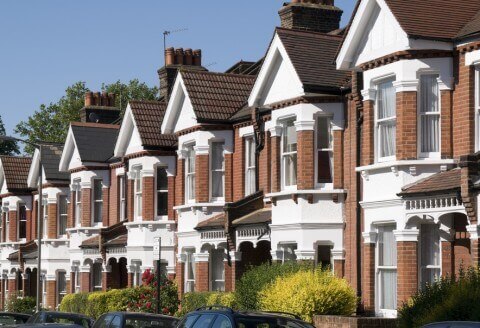What is Development Finance?
Development finance is ideal for homeowners, investors and property developers looking to refurb or renovate a new or existing property and break the traditional chains of applying for a mortgage. Whilst a guarantor loan can help you borrow up to £15,000 towards a home improvement or lifestyle purchase, you may find that you want to do bigger work and need to borrow more. This is where development finance comes in.
Key Features
- Borrow up to £2 million
- 6% interest per year
- 100% construction costs covered, 50% towards purchase price, up to 50% of the Gross Development Value
- Used for commercial and residential properties
- Loan is secured on your property
Source: Tiger Bridging
What Can You Use Development Finance For?
This type of funding can be used for residential properties, whether it is sprucing up your own flat or home that you live in. You can renovate your place in order to continue living there, or with the intention to sell it on for a higher price in the open market or rent it out to tenants through a buy to let. The idea is that any refurbishments, whether it is a new kitchen, loft conversion, basement or additional rooms, will increase the value of your property and allow you to sell it for more or charge higher rent. You have the option over new builds or existing properties as development finance can be used for both.

Commercial properties can also use property development finance as a means of funding. For these kinds of buildings, it refers to those for work purposes like high street shops, offices, vacant land or education sites. Again, you have the option to flip it for a higher price once your modifications have been made or rent it out to tenants.

How Much Can I Borrow?
Typical development finance lenders in the UK allow you to borrow up to £2 million depending on various circumstances such as the value of your property, credit score, affordability and market trends.
The amount you can borrow if fundamentally broken down into:
- land purchase costs
- constructions costs
Of the land purchase, lenders will usually give you around 50% of the costs to buy the land. The remaining amount will have to be funded by yourself through your savings, selling an existing property or other investors. For construction and all the renovations you require, providers can typically cover 100% of these costs. This involves building costs, materials, planning permission and other contractors.
Overall, it works out to around 60% of the Gross Development Value (GDV) which is what the property will be worth once completed or around 75% of total costs.
How Does The Application Work?
Based on the example from a leading development finance company, you start by discussing your plans with the lender and if they are interested, they will provide you with a provisional ‘decision in principle.’ This is a written way of saying that we will offer you the finance you need provided that everything stacks up, like the valuation of your property and your credit score.
The lender will start running the checks and this may include a credit score, affordability check, approved valuation, proof of address and utility bills. If you proceed to the next stage, you will be given a formal offer letter and be required to pay a 2% commitment fee and there may be an additional 2% fee for the broker who has packaged the deal. Some final correspondence between you, the lender and your solicitor and your funds can be transferred in a matter of days. The monies are usually transferred in stages and not in one lump sum. The idea is that each stage allows you to pay for different aspects of the project like purchasing the land or your construction bills and so you can maintain a health cash flow.
How Do Repayments Work?
Borrowers can choose how they would like to make their repayments with different options available. The most standard way is to pay in monthly instalments, paying off interest and capital simultaneously, like a mortgage. However, the majority of property developers prefer to roll up the interest and only pay it once the loan term is over. The interest compounds and accrues over time so you end up paying more, but what this allows is for the developer to keep their finances short term and put it towards their property. Then, they can make the repayment once they have exited, either by selling the property or refinancing.
Other repayment options include paying ‘interest deducted’ where you pay no interest but only the capital. For instance, if you are borrowing £100,000 and would pay £12,000 in interest, instead you have this deducted and only borrow £88,000 – just paying off the capital.
Customers also have the option to repay their loan early if they wish and depending on how early it is, there may be an exit fee that applies but generally they will save on the loan interest.



